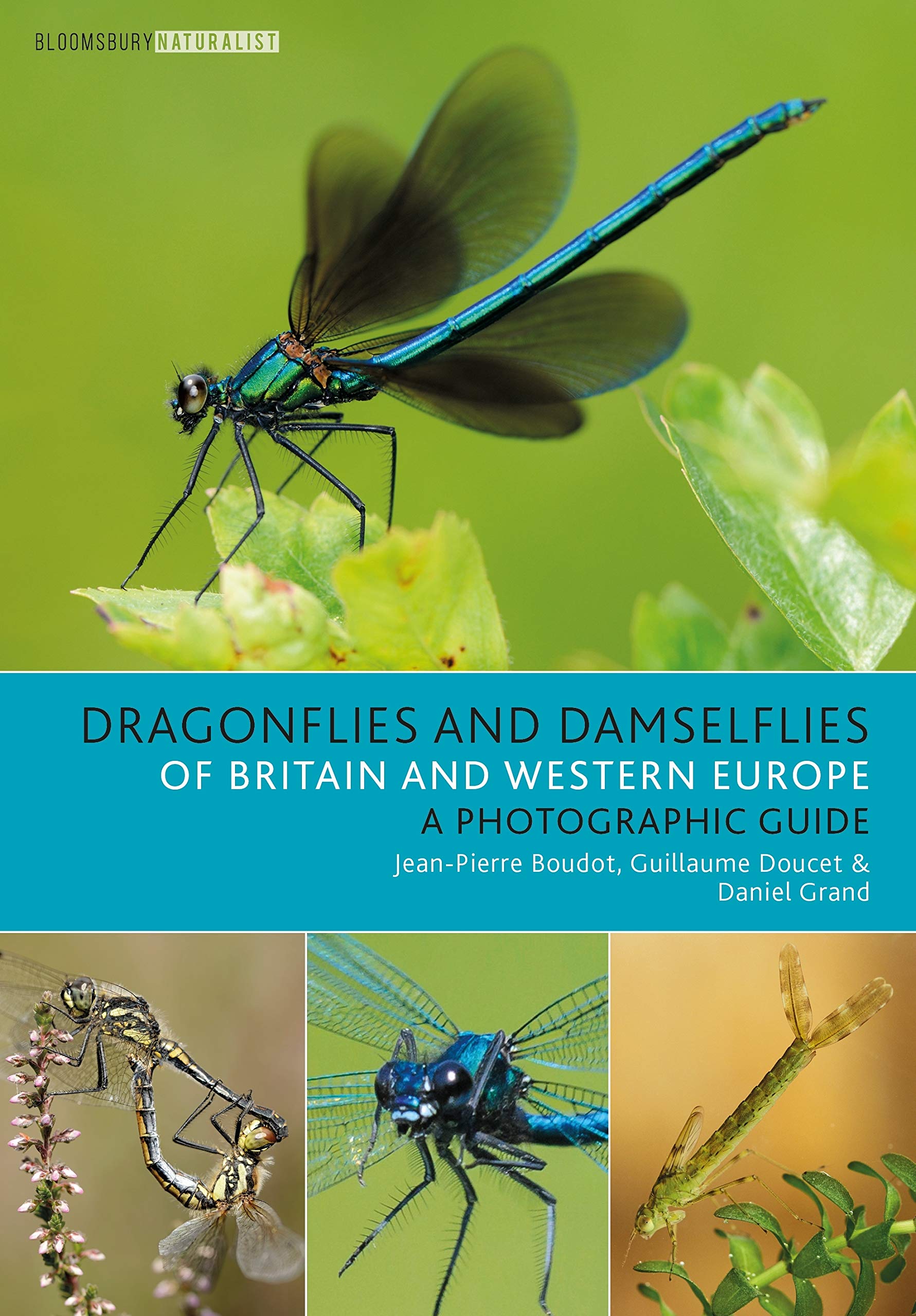Dragonflies and Damselflies of Britain and Western Europe: A Photographic Guide
- Dragonflies and Damselflies of Britain and Western Europe: A Photographic Guide by Jean-Pierre Boudot, Guillaume Doucet and Daniel Grand (Bloomsbury, London, 2021)
- 160 pages, many photographs and diagrams,100 maps.
- ISBN 9781472982223. Pbk, £30.
- Bookshop from £24.99
Many birders' first steps into the wider world of natural history involve looking at dragonflies in the summer months when bird excitement dips. This was my own experience. For some people, the interest grows, maybe leading to membership of the British Dragonfly Society. From there, real enthusiasts rise to the challenge of separating the trickier damselflies and identifying unusual colour forms, submit their records and search for vagrant species.
For anyone with an interest in Odonata (dragonflies and damselflies) there are plenty of very good field guides. One that springs to mind, for example, is A Field Guide to the Dragonflies of Britain and Europe (Dijkstra, Schroter and Lewington), but there are others.
The latest in the Bloomsbury Naturalist series, Dragonflies and Damselflies of Britain and Western Europe is probably not for the beginner, but is ideal for the amateur naturalist or ecologist who is wanting to make accurate identifications. It is a key rather than a field guide, covering all 98 species found in Britain, Ireland, France, Belgium, The Netherlands and Switzerland. The calibre of the authors is unquestioned. In the foreword, Jean-Pierre Boudot is described as "the leading specialist on European dragonflies over the past few decades".
The guide has short introductions to dragonfly life cycles, anatomy, habitats, survey methods and photography, but its core comprises a field key to adults and a field guide to larvae and exuviae (the dried outer envelopes of young dragonflies abandoned during emergence). By working through the keys, which are illustrated with beautiful, annotated photographs and diagrams of wing patterning (colour and venation), thorax colouration and genitalia, it is possible to identify any of the region's regular species. It is especially useful having illustrations of exuviae and larvae in the same guide.
The main limitation of the guide is that imposed by geography. The definition of western Europe is rather restricted, though of course spreading its scope wider would have involved a much heftier tome. I also feel the inclusion of common names in the key would have made it a more widely accessible guide and this could easily have been achieved.
Those minor criticisms apart, this guide is sure to make a major contribution to amateur naturalists' accurate recording of dragonflies and damselflies. Since 'citizen science' is now the main source of data for change in the natural world, this will be the driver for conservation measures to help these fascinating insects.


